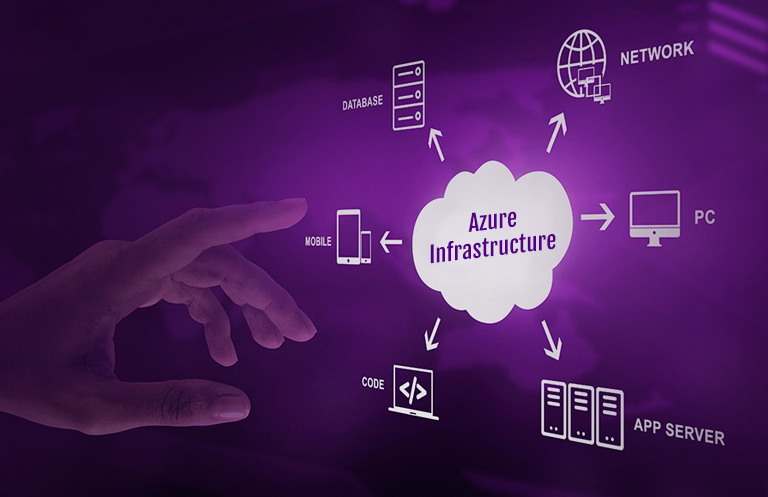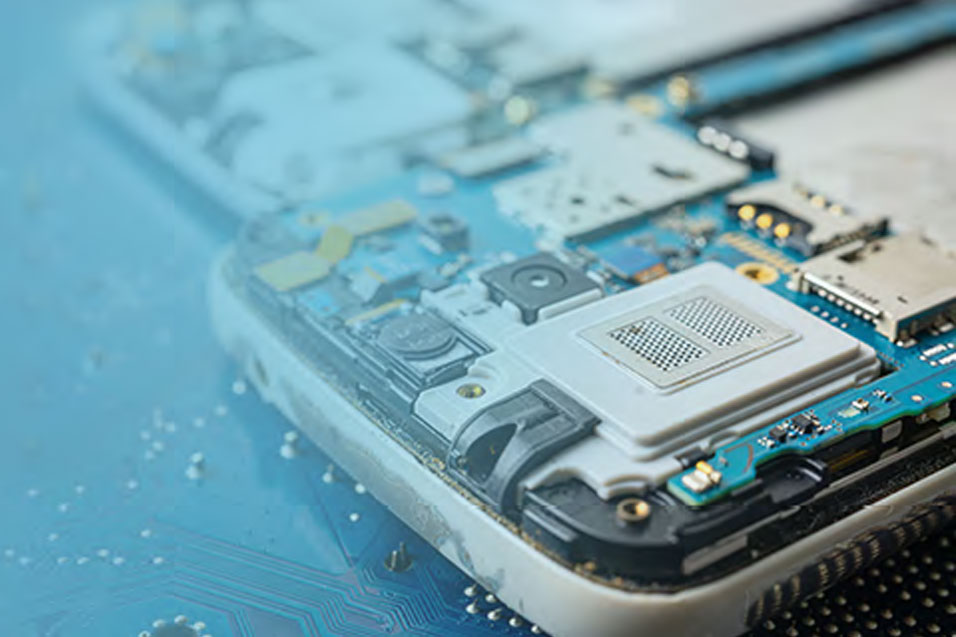The term ‘IoT’ represents a technology where connected devices are provided with proper intelligence to communicate with each other without any human intervention. As the number of IoT-enabled devices increases, the need for effective IoT deployments will also increase to guarantee proper interoperability and reliability.
RELATED BLOG
Focused IoT service offerings ensure the best customer experience and keep operating costs under control. A comprehensive suite of services across the IoT spectrum includes various modules like device, network connectivity, cloud, and application. Let’s discuss each of these in detail.
Device
The term ‘device’ is used for hardware which is designed for a particular purpose. It is used as the reference point for individual hardware components like sensors, off-the-shelf boards like Raspberry Pi, and custom units built using a number of components. IoT devices monitor real-world objects like home appliances, buildings, cars, inventory items, industrial equipment, and wearable devices.
As IoT technology matures, we will a see an increase in the frequency of releases for new devices and platforms. In this scenario, understanding the characteristics of these devices in terms of data capturing, data storage, data processing, connectivity, and power management plays an important role in building a strongly connected network.
At a broad level, devices can be divided into two categories:
- Input Devices: These include various types of sensors like temperature, pressure, smoke, gas, sound, air and water flow, vibration, and speed sensors. These devices capture the data from the real-time environment and convert them into electrical signals for further processing.
- Output Devices: LEDs, speakers, screens, webcams, earphones, printers, TVs, and monitors are some examples of output devices. These devices convert electrical signals into a physical outcome.
Data processing can take place at the device level directly, or the data can be transferred to other gateways, cloud services or application for further processing. Data analysis at the edge of a network can help to reduce the upstream processing and storage requirements.
IoT devices rely on batteries or other wireless power sources (like solar power) for functioning. Based on the operation of the device, it might need to be put into a power-saving mode or sleep mode to expand the battery life.
To implement a properly connected device network, various types of testing are performed:
- Sensor-protocol compatibility testing: Protocol testing helps in proper and efficient communication and interaction between devices and servers. Various IoT protocols like Bluetooth, ZigBee, Z-Wave, Thread, WiFi, Cellular, NFC, Sigfox, and LoRa are checked for device compatibility for smooth operation.
- Device security testing: This testing is performed at various vulnerable points, which include device authentication, data collection, data transmission, device software, and more. The chances of data theft, cyber-attacks, and device malfunctioning are also prevented through this testing.
- Product variant testing: As a part of this, testing is performed on a different generation of products comprising numerous versions of firmware and operating systems (like Android, Linux, QNX, and more). Various combinations of hardware and software are tested, depending upon the usage and functionality of the device.
- Device functionality testing: This type of testing is performed on both hardware and software to check whether the device functions as designed or not. Device virtualization and simulation is often used to lower infrastructure costs.
- Peripheral certification testing: This type of testing is performed to certify different types of hardware- and network-attached peripherals to a connected Various device certifications provide compliance to industry standards and help to fulfill the industry-defined set of requirements. This testing helps in providing smooth interoperability and high quality of performance.
Network Connectivity
As the number of connected devices grows, flexible and responsive connectivity is required to meet the high expectations for network performance. Various network technologies like Bluetooth, WiFi, RFID, NFC, Ethernet, Cellular, Satellite, and LPWAN (LoRaWAN) are available, which help to connect with the device.
We can characterize connectivity technology in terms of power consumption, range, and bandwidth. In addition, each technology differs in terms of a balance between these characteristics.
Bluetooth, WiFi, RFID, and NFC are short-range connectivity solutions that provide high bandwidth but consume less power. Ethernet is a wired connection that provides range as per the wire length. Internet WiFi routers and Bluetooth in smartphones are examples of such technologies.
Cellular connectivity and satellite connectivity are meant for a broad range. Cellular is used when the device is within the range of the cell tower. Satellite provides a much wider range covering a wide area; for instance, in the middle of a dessert or an ocean. These technologies provide high bandwidth but consume high power at the same time. An example of such technology is a smartphone, which collects and transmits a huge amount of data including images, videos, documents and more.
Low Power Wide Area Network (LPWAN) or LoRaWAN is used to increase the range and lower the power consumption at the same time. For example, this technology can be used in agriculture purpose when you need to collect moisture data of farming land.
With the help of network connectivity, devices can transfer the data to other devices or publish the data to services and applications in the cloud. To maintain efficient and smooth connectivity across the connected network, various types of testing are performed:
- Device-to-Device connectivity testing: This testing is performed to ensure proper interconnectivity between connected devices for smooth and efficient communication.
-
Device-to-Cloud connectivity testing: This testing is performed for seamless data capture, data transfer and data storage between the device and the cloud.
- Interoperability testing with multiple protocols: This testing is performed to check the communication of connected devices with each other. As a part of this, various types of validations like hardware compatibility, security standards, data encryption, and more are tested from the device to the network layer.
- Network security testing: This includes testing of data security, privacy and system reliability to maintain a consistent quality of the network. In addition, it helps in ensuring the privacy and safety of the information transferred via web cameras, emails, navigation systems, wearable data, and more.
- Network performance testing: This testing is performed to evaluate, examine, report and track the overall performance of the network. Monitoring each networking device regularly for network availability and response time, upload and download speed, network delays, packet transmission and losses, and error rate helps in improving the network performance.
Cloud
As the number of connected devices increases day by day, the volume of Big Data generated from these devices is also increasing. Cloud enables gathering a large amount of data and reduces the load on the internet infrastructure. Many tech giants like Amazon AWS, Microsoft Azure, Alibaba, Google Cloud, Oracle, and more are building tools to provide a wide range of business technology solutions.
Let’s discuss some of the key types of testing in the cloud:
- Cloud services integration testing: This testing is performed to check whether the integration of new services such as AWS Lambda, EC and S3 is done properly with the IoT ecosystem or not.
-
Cloud security testing: IoT generates a huge amount of data on a daily basis, and all this data is transferred to the cloud via a traditional internet connection or a dedicated link. This testing is performed to check the authenticity and reliability of the stored data.
- Cloud migration testing: This testing is performed to check the compatibility of the cloud during a change in the IoT Solution And Services infrastructure. Various elements which are associated with the system – like database, server, and OS – are verified during this testing.
- Cloud connectivity testing: This testing is performed to check the connectivity between the device and the cloud for data transmission. This is accomplished by checking connectivity protocols such as MQTT, REST, WebSockets, and HTTP.
Application
As a part of IoT, devices are connected to perform certain applications to get the desired outcome. IoT is transforming our lives with many applications like smart home, smart city, wearables, connected car, connected healthcare, smart retail, smart supply chain, smart agriculture, industrial internet, smart energy, and more.
Each application has its own functionality and to check whether it is performing properly or not, we do the following types of testing:
- Web/mobile functional testing: As a part of this testing, the application is tested on both web and mobile consoles to check whether it is working properly or not. It carries a set of predefined tasks and desired outcomes. It repeats at different times with different data input to check the functionality of the application.
-
DOWNLOAD CASE STUDY
Development and Test Automation of a Connected Cross-platform Mobile Application
UI/UX Testing: As IoT is a widespread technology, this testing is performed across various platforms (Android, Linux, iOS, Windows). This testing is performed to check responsiveness, cross-device platform compatibility, and application design consistency. In a connected device network, creating a better UX specifies the functionality belonging to each device and creates device guidelines for multiple device types.
- End-to-end system & integration testing: This testing is performed on various dependent systems to check the flow of the application. The entire application is tested in a real-world scenario to ensure smooth interaction between the front-end (UI) and the back-end (database).
- API/SDK testing: The code generation engine generates a code in different components. This testing is performed to check whether those different generated pieces can work as required in the form of SDK/API or not. Also, API testing ensures integration with third-party IoT devices and the ecosystem.
IoT is a network of different connected devices with various applications installed in them. These applications have many dependencies on various components and services while they are being developed. IoT Testing Services provide real-time testing of data, security, reliability, compatibility, usability, and upgrades in smart devices. Virtualization for IoT helps in simulating hardware and software elements for testing the application with realistic data scenarios up to the required scale. It allows performing test automation more quickly and with less risk.
Improvement in operational excellence is the primary driver behind investments in business process improvements. IoT, IIoT, cloud computing, and big data analytics are some of the key technologies that an organization needs to focus on to achieve operational excellence. IoT systems can bring significant advantages to organizations, such as cost-cutting; risk reduction; improved service reliability; downtime elimination with real-time theft detection; instant root-cause analysis; and enhanced performance of the system.
eInfochips has 21 years of experience and expertise in silicon-to-software testing with CMMI Level 3 and ISO certified processes. Additionally, we have partnerships with external labs to ensure the appropriate testing infrastructure. And we have experienced engineers on digital technologies, test architects and in-house testing labs to provide cost reduction and faster time to market. For more info, check out our unified IoT test automation framework which enables end-to-end testing across devices, web, and mobile.













